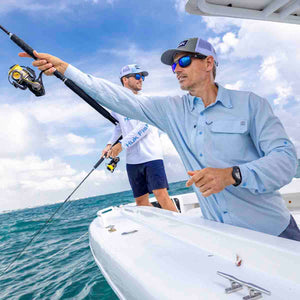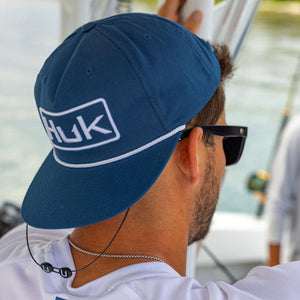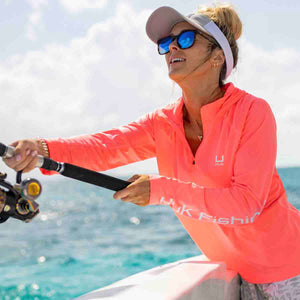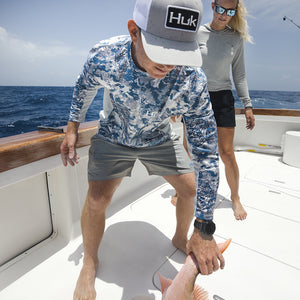Source: Vlad Sokolovsky/Shutterstock.com
Many veteran and professional anglers consider jigs superior to other artificial lures due to their versatility and ease of use.
Jigs can be used in various conditions, seasons and for a huge range of fish species, making them an essential addition to any angler’s tackle box. But to get the most out of your jigs, you need to have the right fishing gear, know the correct techniques for luring your prey and which jigs are suitable. Here are our tips for jig fishing and a few essential techniques that every serious angler should know.
Shop Huk Performance Fishing Apparel and GearWhat Is Jig Casting?
Jigging is the form of lure fishing that uses specific movements to mimic an injured baitfish’s erratic swimming style and is ideally suited for catching large, freshwater fish such as bass.
A jig consists of a lead sinker and hook molded together. The jig is often covered by a soft body which imitates the coloring and appearance of baitfish. Unlike spinnerbaits, which use horizontal movements, a jig moves vertically through the water using sharp jerks to attract predatory fish.
Basic Jig Casting
While there are various jigging techniques, learning the basics is crucial to implementing jigs successfully. Begin by casting out and then let your jig hook sink until it hits the bottom. You should feel the spoon hit the sand if you have a particularly sensitive rig; otherwise, count a few seconds to ensure the jig is in the correct position.
Next, jerk the tip of the rod up and let the jig fall back to the bottom of the water. Repeat the motion, varying the direction of the rod movement. Try snapping upward and to the side, or moving the rod tip from side to side to mimic the swimming patterns of crawfish and baitfish as you move the rod and then reel in the line slightly to keep the tension in preparation for a strike.

Source: HUYSS Photography/Shutterstock.com
Essential Jig Fishing Techniques
Some jigs are better suited for specific prey than others and require more refined jigging techniques to land a fish. Here are three of the best jigs and how to use them effectively to land your trophy fish.
Swim Jig Fishing
The latest technique to gain traction on the pro fishing circuit is swim jigging. Swim jigging uses a combination of spinnerbait and jig movement to create a more realistic swim pattern and is the perfect technique for landing scattered bass.
Ideally, a swimmer jig weighs no more than half an ounce and has a minimal weed guard and a bullet-shaped head to glide through the water more effectively. Swimming a jig typically requires landing the jig in the weedy or rocky strike zone and varying between a slow and fast jerked retrieve. However, avoid retrieving the jig too quickly, as this causes it to rise through the water column and out of the bass strike area.
Flipping Jig Fishing
A flipping jig, also called an Arkie jig, is a highly stable lure that won’t snag on rocks or weeds like other jig styles, giving them a greater range of versatility in shallow water. The primary component of a flipping jig is the oversized hook, combined with a compact molded lead head and a broad weed guard. If you’re fishing in an area with a lead ban, you can also find tungsten versions.
Flipping jigs take advantage of a bass’s ambush-style strike tactics. Drop your jig to the bottom of a healthy patch of weeds or a rock shelf. Keeping a little slack in the line, give the rod tip a few sharp lifts to hop the jig along the bottom. This motion represents a crawfish’s defensive movement, which is the primary prey for rock-oriented bass.
Football Jig
Post-summer spawning bass presents a challenge for many anglers who often find themselves unable to predict the fish’s behavioral habits and strike patterns. A football jig has a unique structure compared with other jig styles, making them the right choice for landing bass during this difficult fishing season.
Football jigs feature a head with two tapered ends like a football, and a light, thin hook that immediately pierces the bass’s mouth. The football-shaped head creates an unpredictable yet stable movement pattern along rocky bottoms. Dragging, rather than hopping or jerking the jig across the bottom of the water, causes the jig to wobble from side to side, which looks like a walking crawfish.

Get Jiggy with It
For a reliable way to land bass in any season, jigs are the ideal lure for your tackle box. With the right movement and a little patience, you're sure to head home with a substantial haul.














